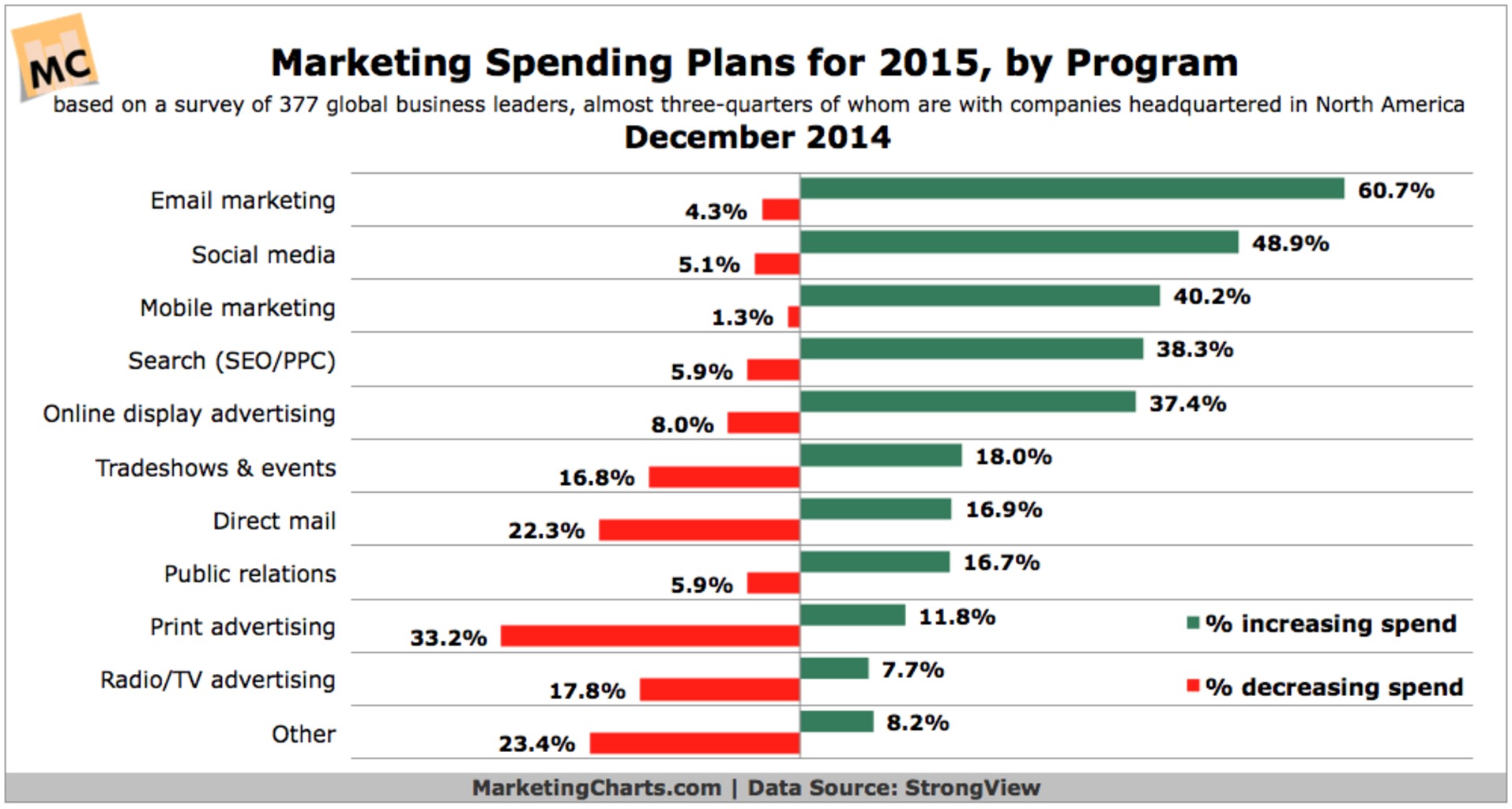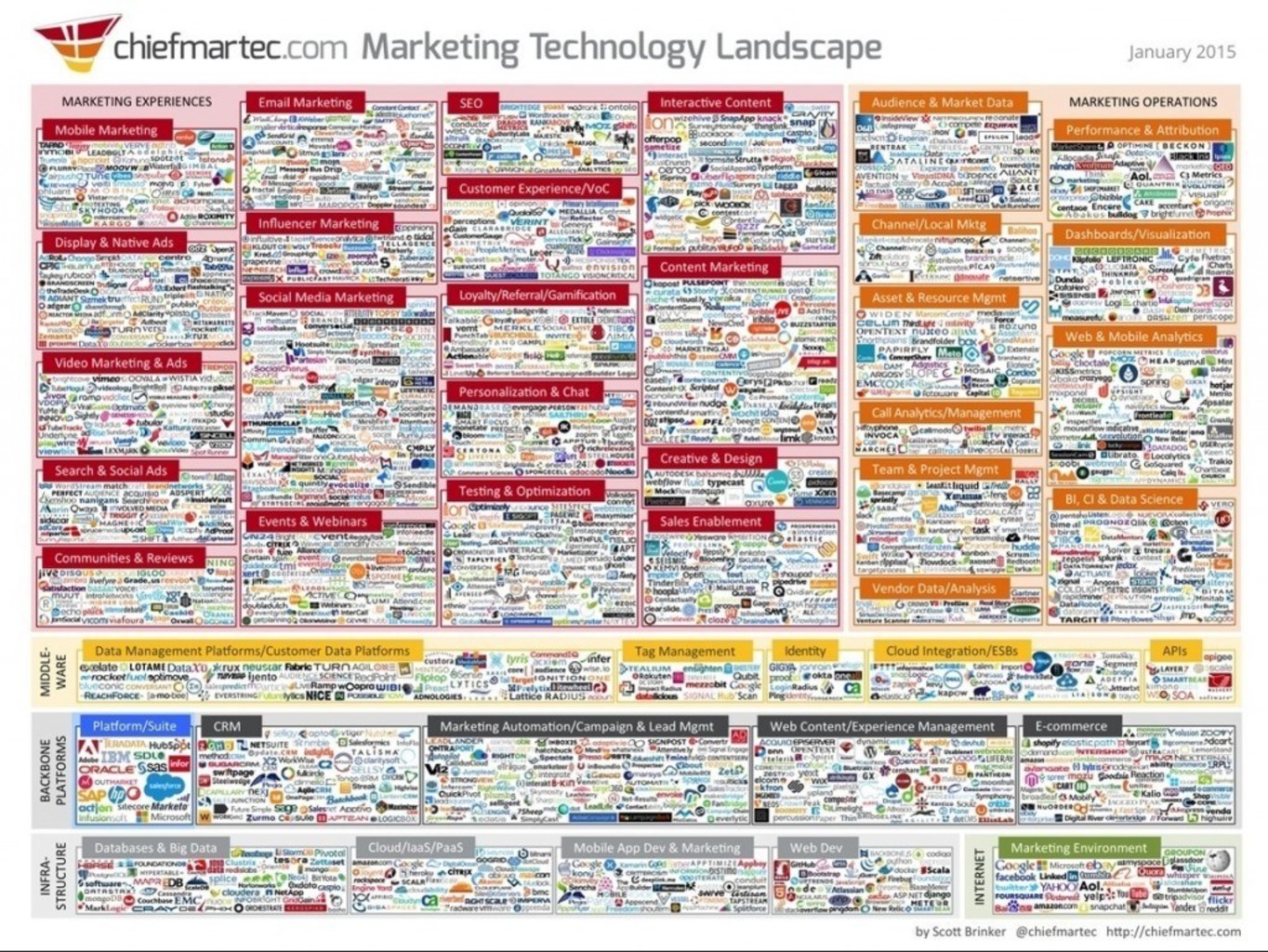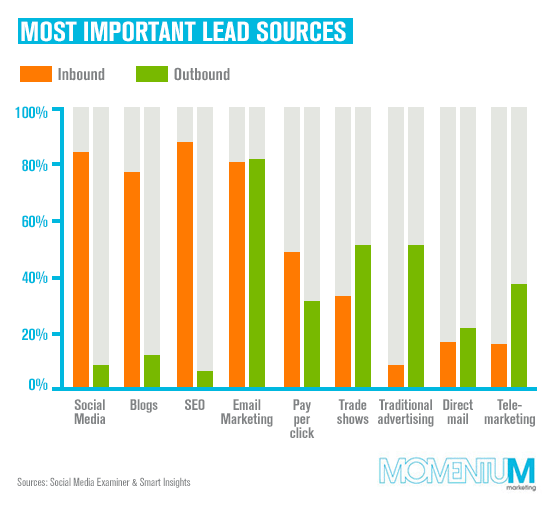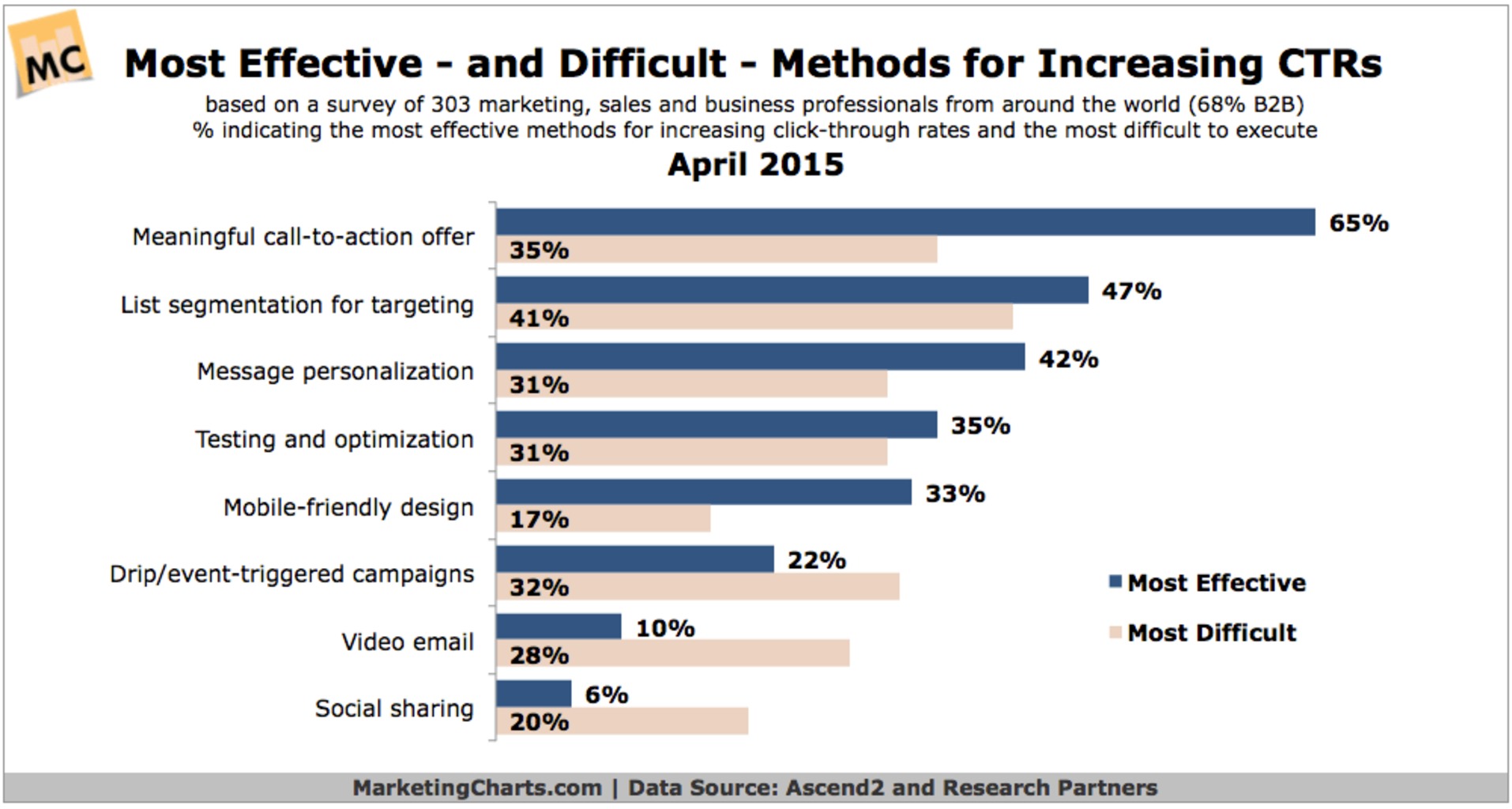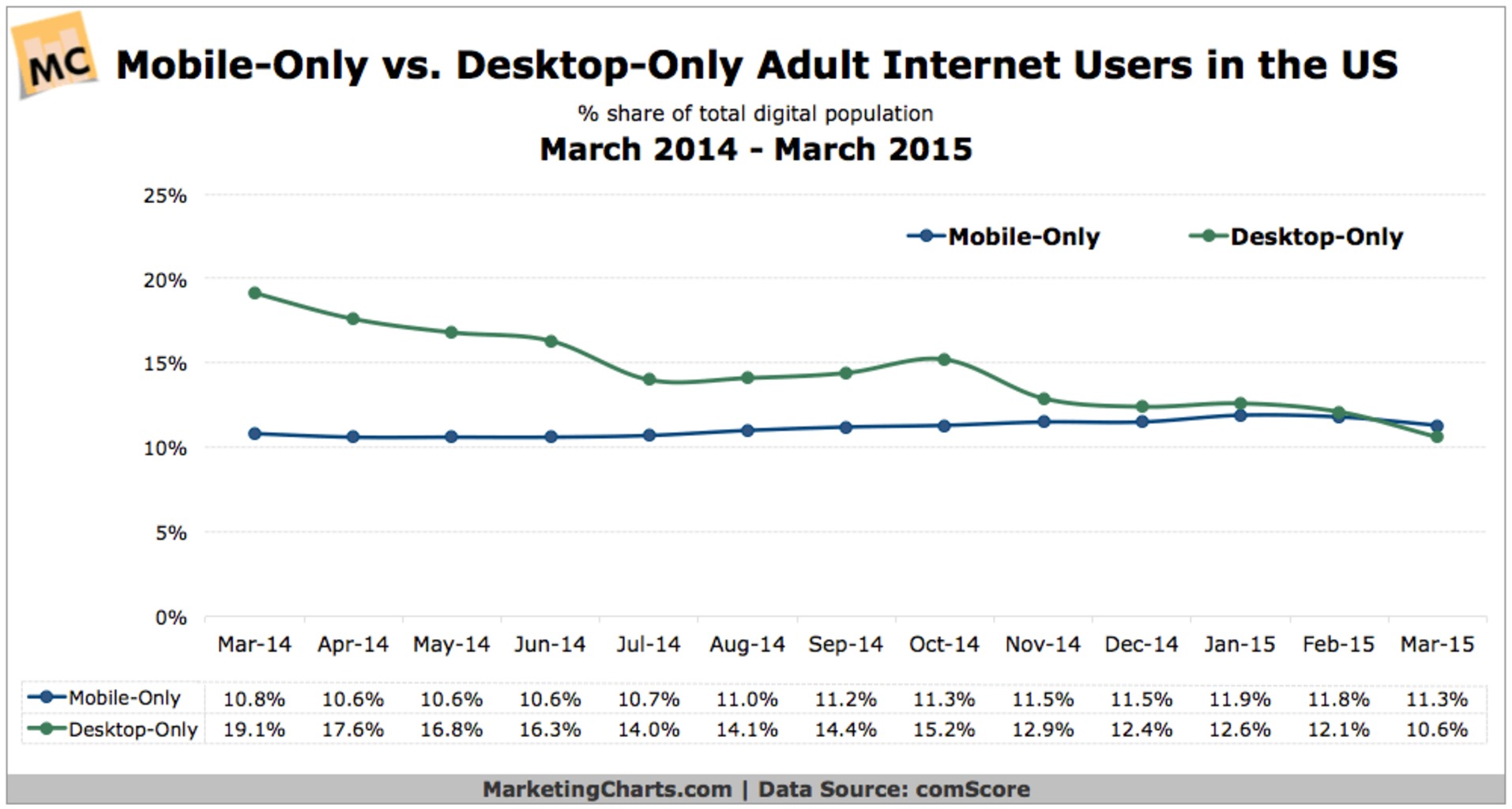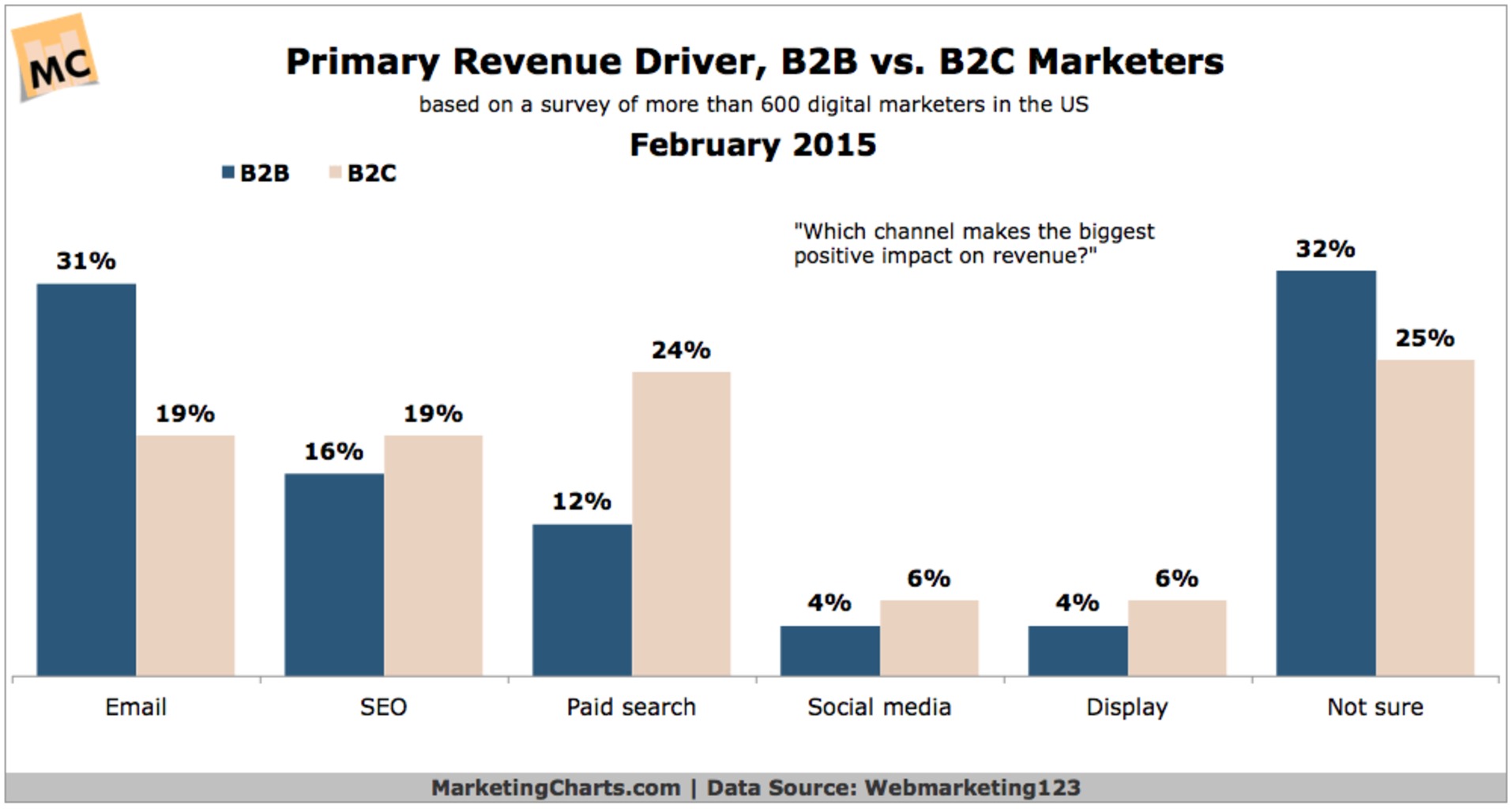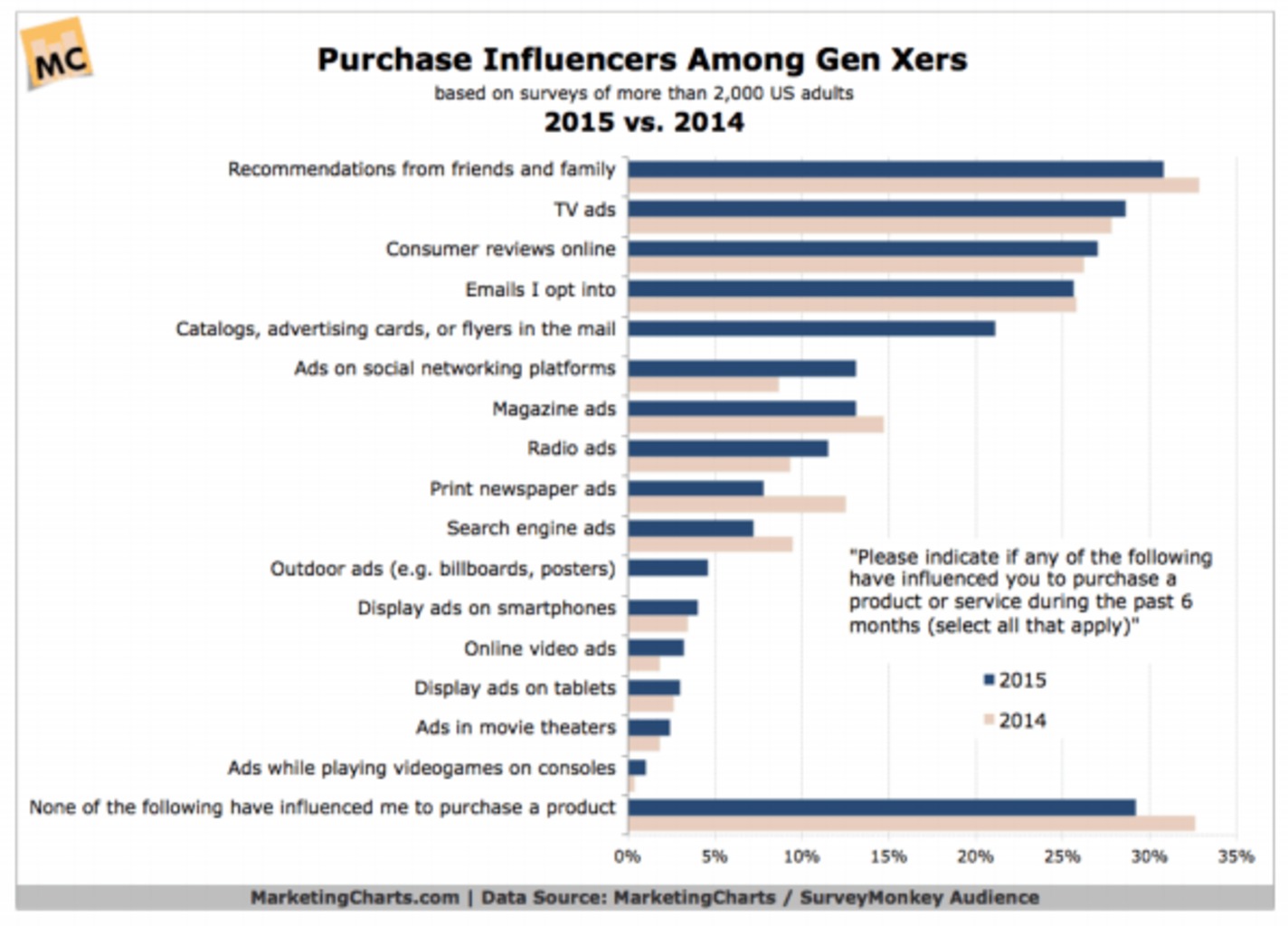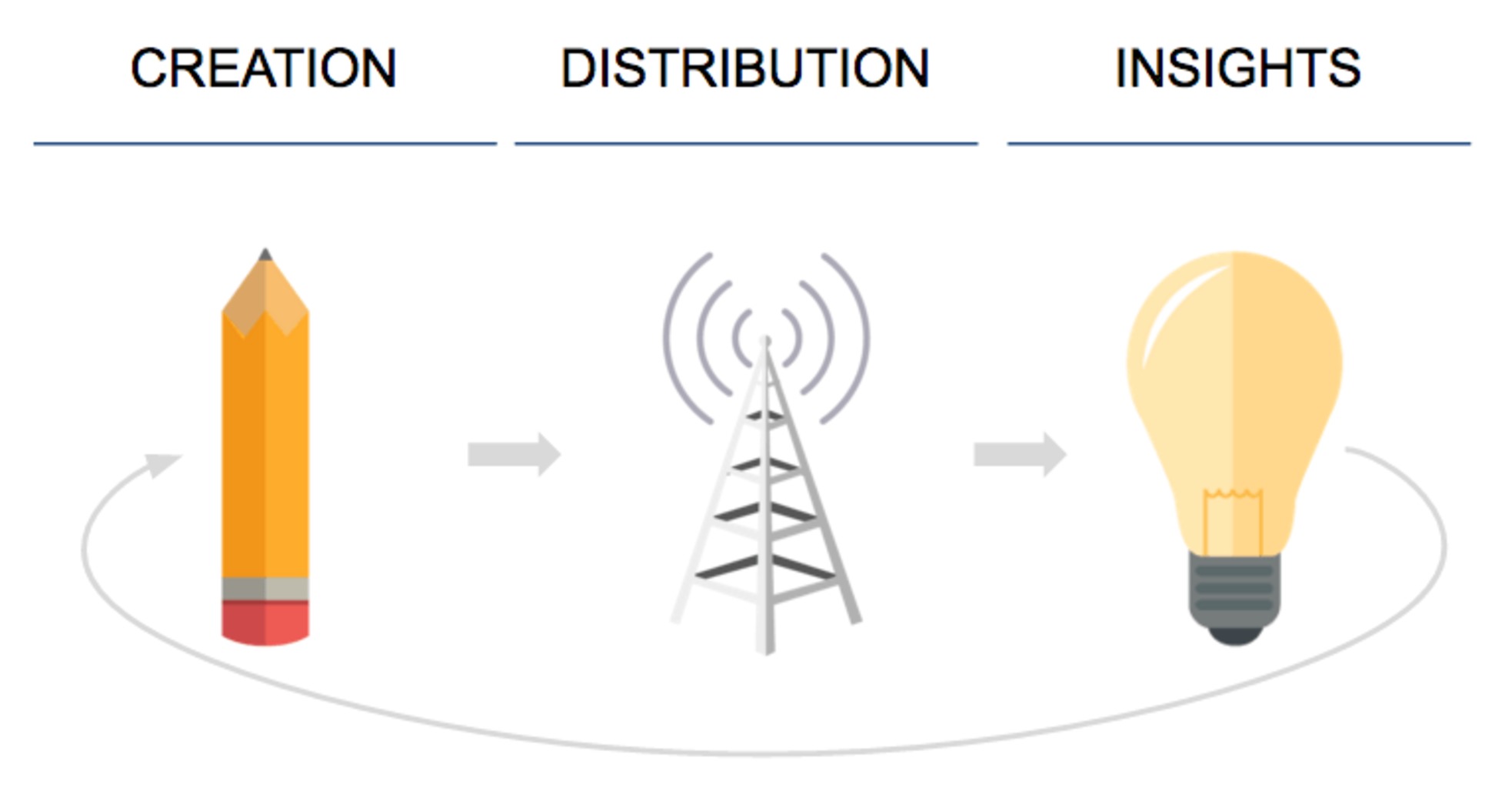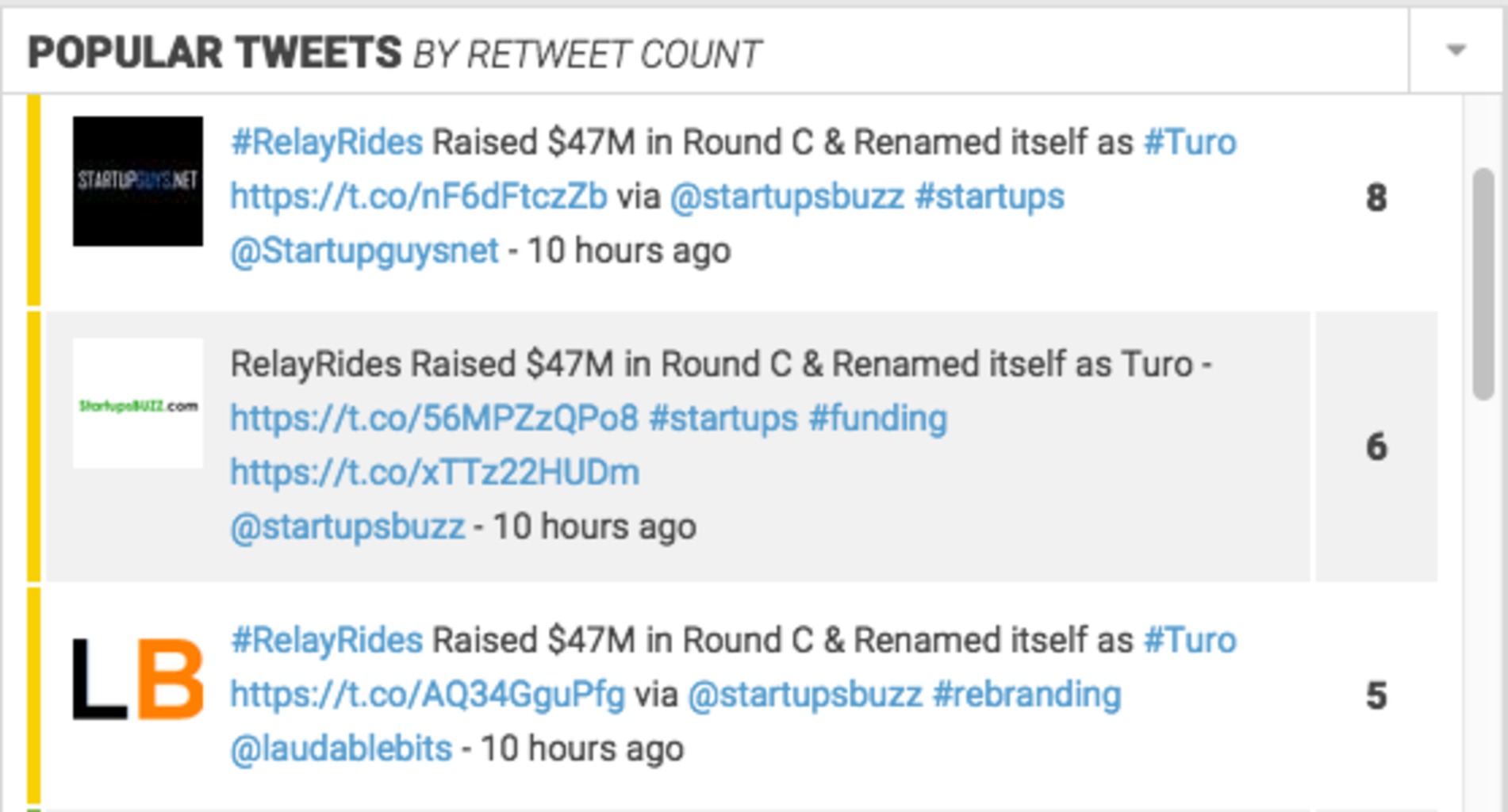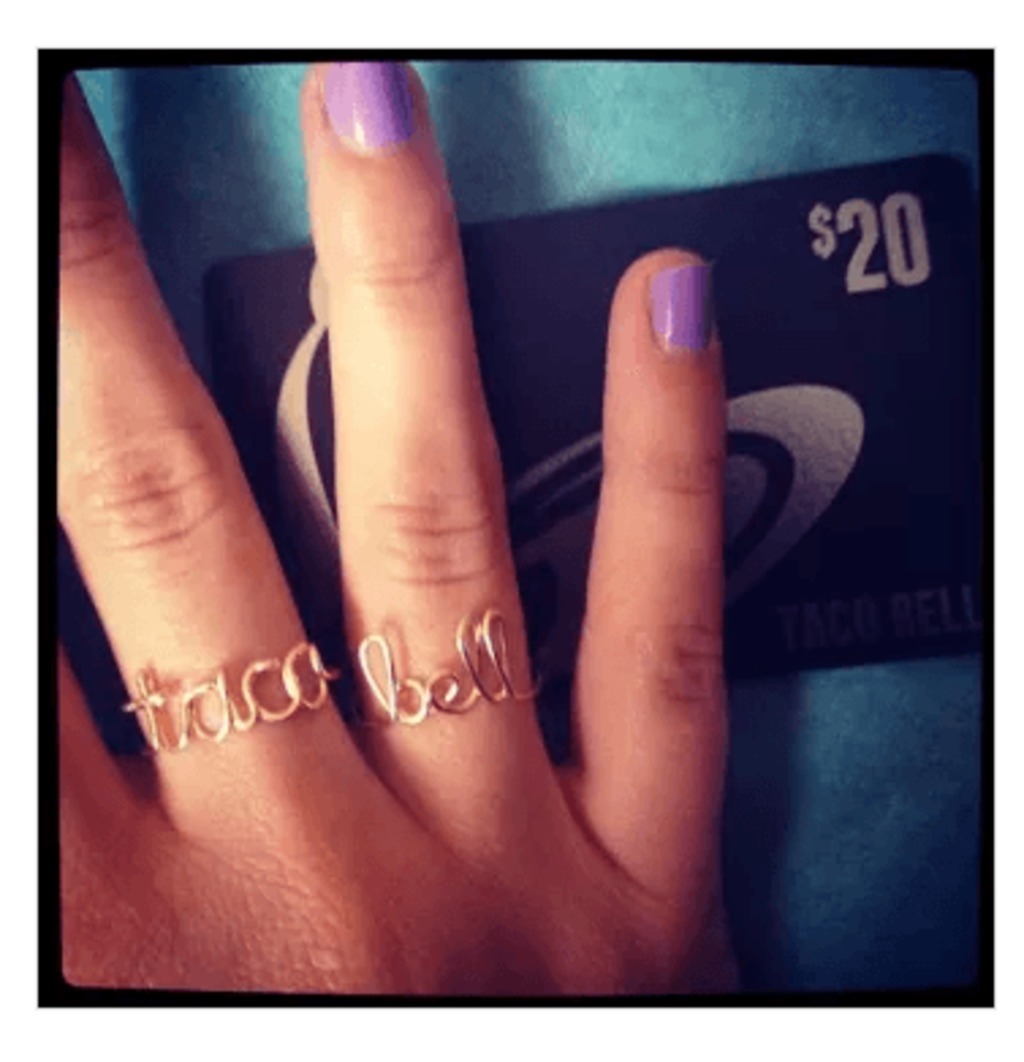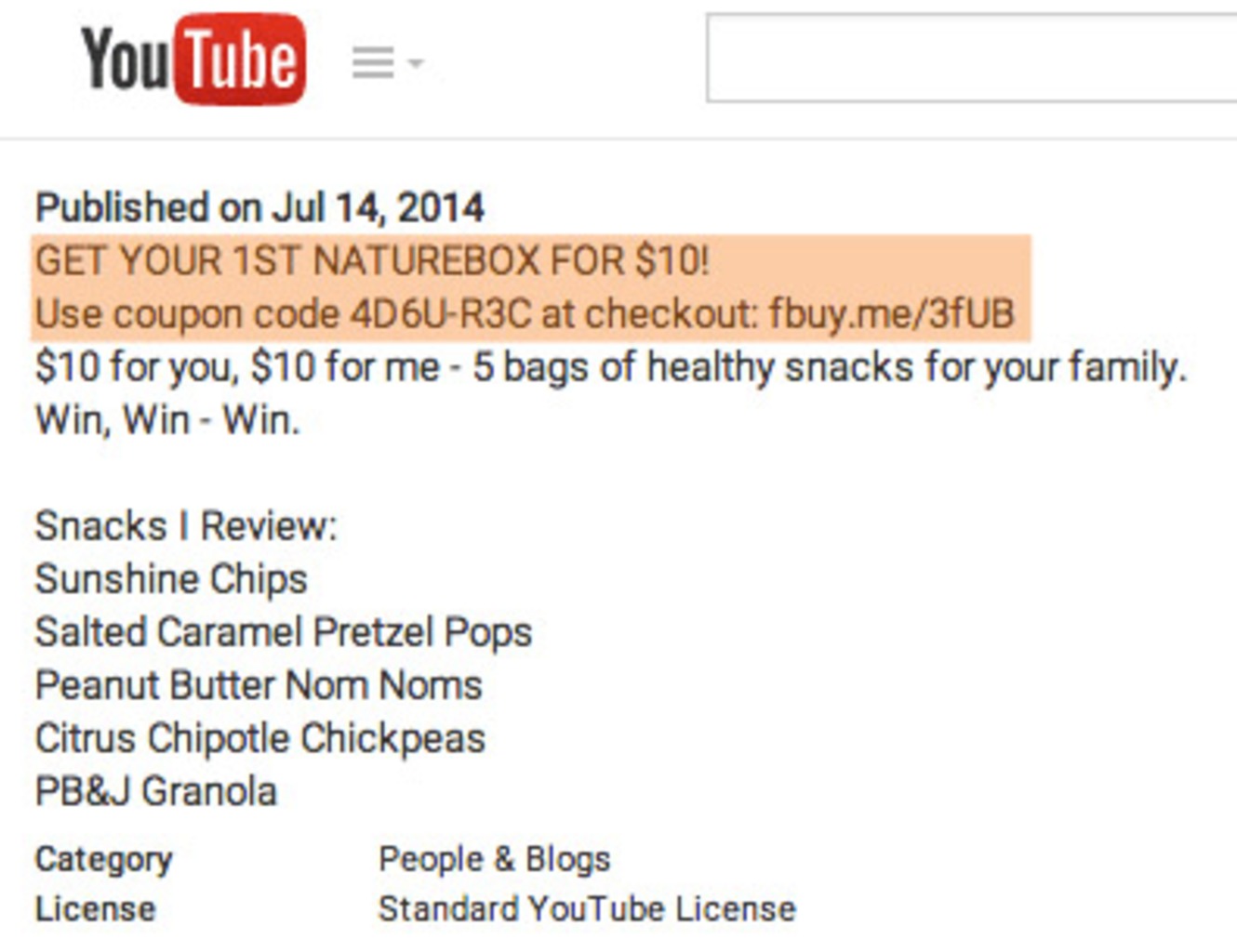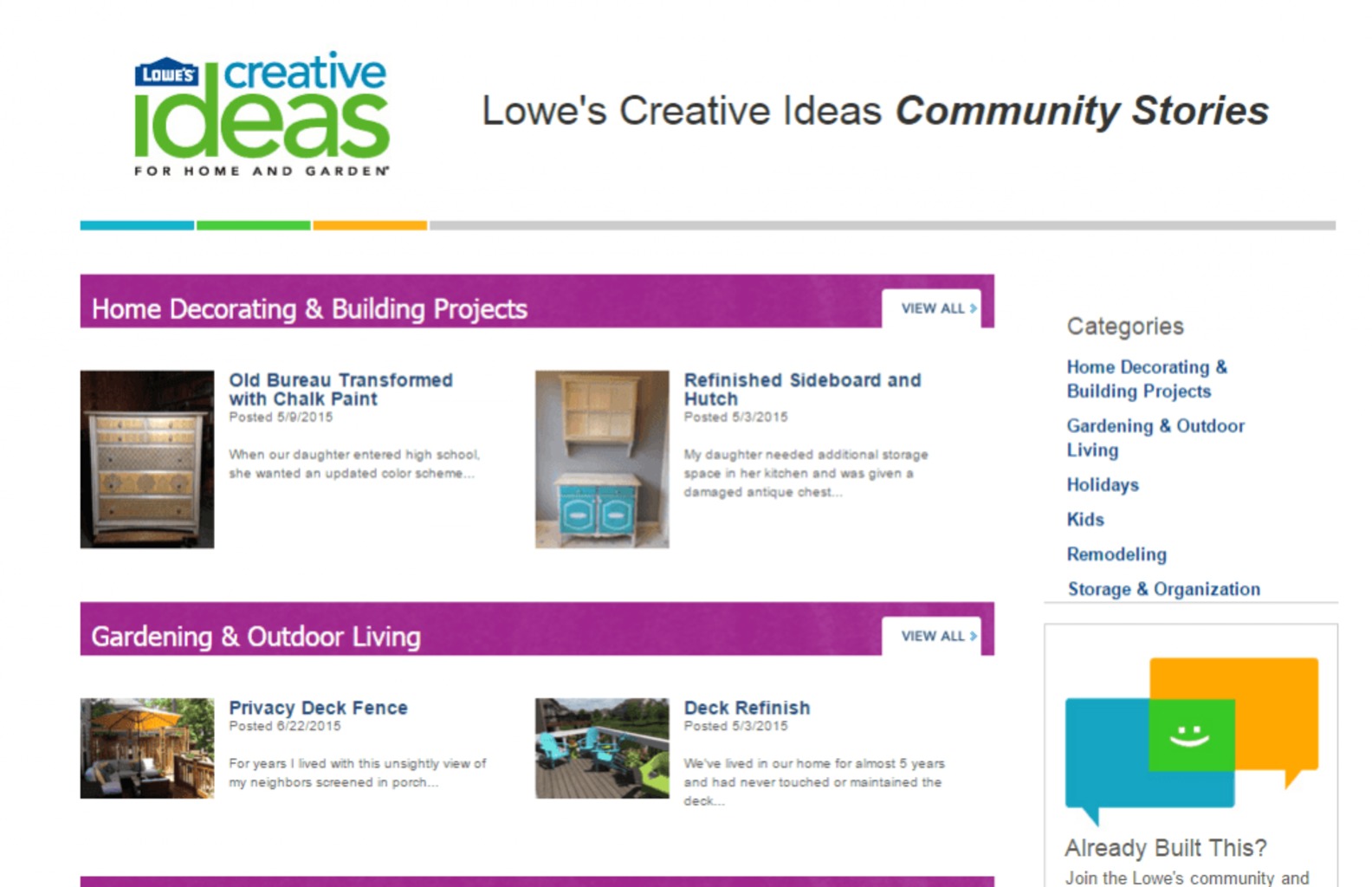
At Convince & Convert, we know how easy it is to get trapped in mundane articles and overlook content marketing gems. So, here we are, each week providing you your 8 favorite gems into your inbox.
10 Insightful Marketing Charts from 2015
Alp Mimaroglu
Alp Mimaroglu is a Marketing Luminary at Symantec. He specializes in marketing automation, demand generation, analytics, and marketing technology. Alp has extensive experience with both business and consumer marketing. He’s passionate about how technology is rapidly becoming the key to success in both the corporate sales and marketing landscapes. Follow Alp on LinkedIn and Twitter @alpmimar.
Data is at our fingertips. But without the proper tools for processing and understanding that data, we would still be in the dark.
That’s why data visualization is such a powerful tool. Infographics and gifographics aren’t just fun to look at—most of us literally wouldn’t be able to make any sense of data without them. That’s why marketers should be paying more attention to the numerous marketing charts being produced each month from every corner of the Internet.
Let’s look at 10 of the more interesting marketing charts to emerge since January 2015, and what they imply for the state of marketing in 2015.
1. Marketing Spending Plans for 2015
2. Marketing Technology Landscape
3. Most Important Marketing Trends
4. and Most Important Lead Sources
5. Consumer Comfort with Brand Communication, by Channel
6. Most Effective and Difficult Methods for Increasing CTRs
7. Mobile-Only vs. Desktop-Only Adult Internet Users in the US
8. Top 10 Marketing Channels Driving Phone Calls
9. Primary Revenue Driver, B2B vs. B2C Marketers
10. Purchase Influencers Among Gen Xers
1. Marketing Spending Plans for 2015
First, let’s look at the state of the marketing world, and where marketers are planning on spending their money. Let’s look at areas of increasing, unchanging, and decreasing spend.
Increasing Spend
- Email Marketing
- Social Media
- Mobile Marketing
- Search
- Online Display Advertising
- Public Relations
Keeping the status quo
Decreasing spend
As you can see, everything online and mobile-related is ramping up, while anything offline is scaling down. The only exception to this rule is tradeshows/events, which have slightly increased spending.
2. Marketing Technology Landscape
Next, let’s take a look at this massive chart by chiefmartec.com (click on it for a larger version). It lists the top vendors in each field of marketing, from mobile to e-commerce. It’s exhaustive, and it should certainly help you choose a vendor for the marketing arena you’re thinking about entering in 2015.
Even if you don’t have any plans to sign up new solutions, it’s helpful just to look over the categories to see what, if anything, you could add to your marketing efforts.
3. Most Important Marketing Trends
The first of these two charts shows us what we’d expect to see. Content marketing is still the most popular area of marketing spend by far, with big data, marketing automation, and mobile marketing all in close quarters for second place. Surprisingly, online PR is now [dead last](http://www.convinceandconvert.com/digital-marketing/public-relations-change/).
4. Most Important Lead Sources
The second chart shows us what we would expect, but gives us one great insight that may not be immediately obvious: Email marketing is by and large the best marketing method. It drives an almost equal percentage of inbound and outbound leads at a very high rate. The trend in recent years has been very inbound marketing-heavy (e.g., social media, blogs, SEO), but hopefully this chart will steer some of that inbound energy back towards outbound email marketing as well.
5. Consumer Comfort with Brand Communication, by Channel
Consumers report the highest level of comfort when receiving email communications from brands.
It’s not even a contest. Social media, which inbound marketers constantly preach, doesn’t even hold a candle to email marketing when it comes to recipient preferences. In fact, it looks like consumers find social media outreach just as annoying as spammy text messages.
6. Most Effective and Difficult Methods for Increasing CTRs
7. Mobile-Only vs. Desktop-Only Adult Internet Users in the US
Speaking of lead sources, we all know that mobile users are catching up to desktop users, but I bet you didn’t know that mobile-only users recently surpassed desktop-only users in the US. Not only is this surprising, but it also leaves us with no excuse for sites that aren’t mobile-optimized.
Let’s face it: All of us have dawdled when it comes to making a site mobile-friendly. But the weak justification of a desktop-optimized site being preferable to a mobile-optimized site no longer holds with this kind of data staring us in the face.
8. Top 10 Marketing Channels Driving Phone Calls
While email marketing is fantastic for top-of-the-funnel inbound and outbound marketing, phone calls are still closers for mid-to-bottom of the funnel leads, especially for B2B businesses.
But instead of focusing on ways to get more potential customers on the phone, how can we drive more phone calls our way? By embracing mobile, of course. Mobile search optimization drives an astounding 45% of phone calls to businesses, compared to second place desktop display ads. And because there are now more mobile-only users in the US than desktop-only users, this trend will only continue.
9. Primary Revenue Driver, B2B vs. B2C Marketers
I have been painting a fairly one-sided picture in favor of email and mobile marketing, so let me dial back a bit and take a look at the big picture. I mentioned earlier that email is most effective for B2B marketing. This is true. It’s not true for B2C marketing, where paid search is still most effective.
But when you really take into consideration the cost of paid search over the cost of an email marketing campaign, those five percentage points of difference may not be as tempting anymore. Email marketing is much cheaper to execute, and ROI is almost just as high.
10. Purchase Influencers Among Gen Xers
Lastly, let’s not pat ourselves on the back too much. While all this pulled data is great, it’s hard to beat survey data. According to consumers themselves (specifically Gen Xers), personal recommendations are still the most important driver for purchases.
And despite the year-over-year decreased spending on TV ads by marketers, consumers still rank TV ads very high. Direct mail clearly isn’t as dead as marketers think it is, either. It easily makes the cut and rounds out the top five purchase influencers for 2015.
5 Things Companies Do That Ruin Storytelling Success
Kathy Klotz - Guest
I am optimistic about the next phase of storytelling bringing the industry to a better place—although I do have a bone to pick with how some organizations knowingly (or unwittingly) get in their own way. Here are five things companies do that can impede storytelling success.
Don’t make me turn this storytelling van around, kids!
1. The Complexity Conundrum
I see this too often, especially in industries that have lots of jargon, such as high-tech, financial services, medical, pharmaceutical, etc. Some corporate storytellers think that a good story has to be layered with stuff—because a simple one is just too simple to be effective, right? So they add more bells and whistles to pimp out their story ride so as not to “dumb it down!” Ackkkk!
It’s hard to watch when companies are so close to a beautiful story, and then this happens! Complexities like jargon kill clarity, and clarity is the storyteller’s burden, not the audience’s. When I’ve said we need to keep things simple, I sometimes am met with the, “Why would we dumb it down?” response.
Simplicity is about accessibility of message, and it is not the same as “dumbing down."
Secondly, that phrase is patronizing to your audience. “Simple” allows your audience to champion your story. Complexity works against that. Your audience is smart—they just shouldn’t have to work that hard to understand your story. That is your problem.
Moreover, jargon-monoxide poisoning—as I’m known in the industry for calling it—is a big signal to me that a company does not have a clear story, or else they’d be proudly singing it from the Swiss Alps like in The Sound of Music. (Note: I like romanticized analogies.)
Complexity gets in the way of the emotional resonance of a great story. Without emotional arcs, no one cares about your story. I’d say your mom will, but I’d be lying to you—just like your mom sometimes does!
2. The Superhuman Fallacy
Too many companies have bought into a myth that great stories should make them look like “superhumans.” So, they take a great simple story that works and turn it into a freak on story steroids in a quest to make their story more “awesome.”
Your story shouldn’t sound like it came out of Forrest Gump. “Superhuman” isn’t real. What’s real? Being human, and telling the truth without too much exaggeration.
Too often, storytellers believe that the truth isn’t enough and that their stories, by extension, are too ordinary to be meaningful.
I disagree. Of course you can take some poetic license, but there is a difference between a little story botox and going way overboard so that there is little truth left. The latter is a terrible disservice to the organization and to audiences. A great, honest story doesn’t need story steroids, or “storoids.” (Stand back, all—I have a comedic habit of Kathy-isms!)
The truth wins every time. It’s human. Sometimes organizations don’t want to reveal the truth because it makes them look “vulnerable.” Well, all vulnerability should have context. And if vulnerability is relevant and makes a company more transparent and honest, do it. For more info on being vulnerable, I’ve got some resources for you. I also just did a Hangout on this same topic with a great guest.
3. Fear of Risk
A great story has risk—a risk to the storyteller, a risk in the story that has to be resolved for the audience, and risk that the story might not work. Over-sanitized stories, like stories by committee, often become crappy stories.
Sometimes organizations fear talking about challenges they face; they fear being vulnerable, as I mentioned. Yet, stories without challenges are not stories at all. Challenges create tension and risk that have to be resolved for the audience—that’s part of great storytelling and taking your audience on an emotional journey.
Your audience feels risk—there is no getting around it. Storytelling is how you acknowledge it and show your audience how to resolve it. Today, companies need to be more afraid of not risking anything. Now that’s scary.
4. The Perfect Ending
A story that ends with an economic benefit makes a really crappy ending. Simply telling your audience that your product will help them save or make money or time—concentrating on a rational, economic benefit—is a really shallow ending. “So what?” I say. And so do a lot of your users. Shallow is emotionally unsatisfying.
What users really want to know is how their personal lives will change. They want hope that they will be better. What will money allow them to do to achieve community, fulfillment, credibility, recognition, and all the things that human beings want?
Your audience has human needs that have nothing to do with your product or service, and those needs go beyond rational, economic value. It’s your job to find what they are and tell stories that speak emotionally to those needs. Did your product help them reach their personal goals? It’s never about your product, ever.
It’s even OK to have a story ending that is open-ended, still evolving, and that leans towards hope. You can also have a business story that invites your audience to co-create an ending for themselves by sharing their stories. A great ending isn’t perfect, just better. And realistic.
5. Hiding Behind a Corporate Veil
The “Corporate Veil” is coming down in favor of a human frame. Part of the reason many brand stories fail to capture the imagination of audiences is because they are still oriented around companies as protagonists.
Companies can’t be. People don’t care about companies. They care about people. You can’t hug or thank a company; although many of us would like to smack companies!
That means great storytelling should be told through the lens of a person: a specific customer, a passionate employee, a dedicated partner.
That’s what connects with people: stories of other people who are like them in some way or share similar values, situations, or challenges. Every great company story must be anchored in a human story, and that can only happen when a story is told through a personal human lens.
How to Create Assets Your Sales Team Will Actually Uses
Mark Yeager
The relationship between sales and marketing departments is often complicated by their differing orientations. The sales side may see marketers as creative types who don’t have an eye on the bottom line, and marketers are sometimes tripped up by the sales team’s focus on living quarter-to-quarter.
A classic sticking point for this relationship centers on the creation of marketing and sales material. The marketing team tries to create forward-looking content and collateral that address a broad range of prospects, but the sales team feels like that material doesn’t address the specific needs they are hearing from their most recent sales conversations.
Being proactive in communications with sales produces better content that will not only be a key tool in closing the sale but can also be used more than once.
In order to get alignment about the assets that are really going to be used, here are a few questions to keep in mind.
Who is this material for, and what problem do we solve for them?
This should always be a marketer’s first question for everything they create. The part of the sales cycle that challenges marketers the most is that there may be a few different people to get through before you actually reach the decision maker. These gatekeepers perform different functions within a prospect’s organization and often put a very different filter on which aspects of your product or service are important to them.
For example, executives may care more about cost and productivity than customer service people who most often care about client satisfaction. This is where it can get tricky with content—make sure you align your materials to what your specific target audience cares about throughout the entire buyer’s journey.
Details matter. A successful close taps into the emotion of a specific pain point by using the words a prospect would most likely use themselves.
Content fails when you create materials that speak to very broad audiences.
It’s better to be specific about the problem you are solving for one group of people than to be nonspecific and, consequently, irrelevant to all.
Where does this piece live in the customer lifecycle?
This is especially important when you’re creating a new piece of content. Your approach will be different if it’s a top-of-funnel lead-capture item versus a facts-based case study that comes later in the decision-making process. It’s important to be strategic here.
Ensure you’re bringing as much analysis as you can to the table.
A salesperson might come to you and say, “I need a pamphlet for a client in the healthcare industry,” when really the industry is less important than who the decision maker is and how their opinion will affect the overall sale.
For example, if the prospect has to do a lot of internal convincing before closing the deal, you’ll want to give them content in a format that makes it easy for them to explain the benefits to someone on the outside.
What does this type of prospect respond to best?
This is all about knowing your buyer personas and making sure every piece of content you create aligns to them.
Sometimes marketers feel tempted to create content that checks off a to-do list: You have your whitepapers, your ebooks, your infographics, and your case studies. But if you work in an industry that, say, doesn’t respond well to long form content, you’d be much better off creating material that they do respond to.
You can’t shoehorn your prospects into responding to your content. You need to create content that fits your prospects like a glove.
What kind of mileage will we be able to get out of this asset?
The worst mistake marketers can make is to create sales tools for one prospect. We’ve all had a salesperson come to us and say, “I need X material. Nothing we have will work.”
That salesperson may truly believe this prospect is a special, amazing unicorn that deserves a huge investment and completely new material. And yes, there may be cases where the size of the deal warrants a complete redesign, but that’s rare. The goal of your team is to create content that can be applied to many, many sales conversations. You don’t know if that unicorn customer is actually going to sign, so these decisions must be strategic.
A great way to prevent the one-off requests is to bring the sales team in as you’re creating content and make them an active participant. Interview them about what they hear in the field and the questions they get most often. Inquire about the content that closes sales as well as the content that was used in the most recent losses. By acclimating them in this process, you’ll provide context as to how and when they should be requesting new tools.
By asking these four questions, you’re addressing two key concerns of the sales team: that the marketing team doesn’t listen to their needs, and that the marketing team wastes budget on material they can’t use.
By tailoring content to your buyer personas, being strategic about the ROI of materials, and staying deliberate about how you address in each part of the decision-making process, marketing and sales teams can create materials that are more effective that either group could create on their own.
How to Choose the Right Content Marketing Software
Yoav Schwartz
It’s not easy choosing the right software for your content marketing efforts. Luckily for you, I’m here to help.
The reason it’s so hard is that there are so many requirements for an effective content marketing strategy. While there have been plenty of attempts to make sense of all the different software choices that are available to you, they tend to confuse and daunt more than help.
Take, for example, marketing software “landscape” diagrams like this that showcase endless logos in random buckets of functionality—great for gaining a sense of the vast number of options, but oversimplified for the purpose of making choices. These diagrams only tell you that there are many, many… many software solutions out there, all vying for their place in this incredibly fast-growing movement called “content marketing.”
Given their desire to categorize everything on a level playing field, these diagrams tend to force each logo into a single bucket of functionality which results in pigeonholing every vendor as a “point solution” that does only one thing well. Not every software vendor is a point solution. Many touch on a variety of functions and processes across marketing as a whole, while others truly do focus on one small piece of the puzzle.
Other attempts, like this one, only hit one note of what makes software “content marketing” software: how many integrations it provides to other software vendors. Otherwise, it uses signals like how many social media followers that vendor has. That may help you determine if a vendor is established, but that’s about it. It’s a one-dimensional assessment much like the landscape diagram.
In order to uncover the right solution, we must first break this mold and give content marketing the more accurate, thoughtful, three-dimensional perspective it deserves.
After all, in the world of marketing:
“Content isn’t King, it’s the Kingdom.” – Lee Odden
It’s also important to realize what’s been happening in digital marketing as a whole. It has evolved. Although we’ve been using social media management software for a decade and marketing automation platforms for years, we continue to use those solutions—just more so for marketing content than ever before. As a result, those solutions are now part of an effective content marketing strategy.
When content marketing gets described, it somehow gets placed beside these other marketing functions as if it’s the new kid on the block, when in reality, it is the new umbrella under which those solutions sit.
Redefine Your Content Marketing Process
To choose software for content marketing, we have to be able to articulate what it’s going to do for us. I’ve found the continuous process of marketing content to be defined most frequently as a three-pillar system:
“Creation” is the process of, well, creating content. “Distribution” is how you get eyeballs to your content, and “Insights” means the measurement and reporting on those eyeballs.
But this is a rather flawed perception. Where in this flow have we figured out how this content will actually be presented or managed? Where is lead generation taking place? What is actually getting distributed on social media?
At Uberflip, we’ve been touting a resolution to this misperception for some time. Behold: the fourth pillar!
“Experience” is the way in which content is consumed, the destination of what is being distributed, and where lead generation takes place.
Your content experience is the very essence of how your incredible content is packaged for your audience to devour. Without a great experience, you’re serving piña coladas in a garbage dump instead of on a sandy beach, you’re riding a tricycle instead of a four wheeler, you’re playing a 3D movie on a small screen without providing 3D glasses, you’re… well, you get the point.
The reason content marketing “experience” has been ignored for so long may lie directly in how our content distribution methods have evolved.
One example of this is email. For over 15 years, we’ve primarily been sending our prospects content via email. In the early days, this content included newsletters right in the body of the email, PDFs, and sometimes even video files as an attachment.
Solutions like YouTube (a better video “experience”) allowed us to link out to that video content and use the email only as a call-to-action. Video is the most obvious example, but if you attach a PowerPoint file today instead of using a solution like SlideShare, or a PDF instead of using a Flipbook provider like Uberflip, you’re not only serving up a poor user experience—you’re missing out on user metrics and an opportunity to continue the content journey. I’m not knocking email. Email has been around a long time, and it’s not going anywhere.
Email is most effectively used as a call-to-action that drives people to content experiences on the web.
It’s one of several distribution channels for effective content marketing.
All that said, content experiences are by no means a new idea. We’ve been building out WordPress sites for over a decade! But while CMS’s like WordPress are great for your website and blogs, all those other forms of content (e.g., videos) can either be shoehorned into blog posts or consumed on non-owned experiences like YouTube.
And then of course there’s the rise of mobile. If you’re sending visitors to non-optimized experiences for their screen size, you may as well have a big “goodbye” as your headline, as that’s all they’re going to read.
Content Marketing is Not Flat
The reality is that by forcing content marketing into four linear pillars, we’re only scratching the surface, and we’re really no better off than with those diagrams I scorned earlier. Each of these pillars is more complicated—more three-dimensional. They look more like this:
What I’ve done here is further break down each pillar of content marketing into its parts. These are simply more refined pillars, or “buckets”—most of which can be further refined if we felt compelled.
For example, you could chop “experience > management” into smaller buckets like traditional “CMS’s” (think WordPress), “landing pages” (think Unbounce), “content hubs” (think Uberflip) and even “video players” (think Wistia or Vidyard).
You could also mix in content recommendation engines like BrightInfo and personalization software like Optimizely that enhance or improve those experiences, or data enrichment software like DemandBase or ReachForce to fill in the information gaps on your leads. There are numerous platforms and point solutions that touch or “own” a portion of content experience management, much like there are ones that touch or own other buckets within the other pillars. Using this model allows us to paint different solutions—whether point or platform—with more than one tone.
Many software vendors will easily fit in more than one bucket.
Imagine those “landscape” diagrams where each logo got recognized for all the buckets of functionality it satisfied. Wouldn’t that be a better way to understand how software vendors participate in content marketing? Wouldn’t that make it easier to choose the right vendor?
Doing so would allow us to break out of the mental box we’ve created and recognize that even social media management, SEO software, and marketing automation platforms are all a part of content marketing.
Marketing Automation’s Role in Content Marketing
Marketing automation platforms, which predominantly serve as sophisticated email marketing solutions, can be thought of as a point solution (albeit a mature one) within the distribution pillar.
Even though these platforms have been around long before the recent rise of content marketing, it’s because of the aforementioned evolution of email marketing that they’ve squarely in the mix of effective content marketing.
Marketing automation is rather limited without a healthy supply of contacts, or more bluntly, email addresses. And it goes without saying that the most effective way to build your distribution list these days is through effective content marketing.
Social Media Management’s Role in Content Marketing
Social media sites like Twitter and YouTube, in combination with the vast number of software vendors that help manage those channels (think Hootsuite, Sprinklr, or Buffer), are ultimately helping us distribute content. They’re distribution channels and channel management software.
Whether you’re marketing a new whitepaper or just trying to grow your following, if you’re into content marketing, then you’re doing both of those things squarely with the intent of leveraging those channels for your content marketing efforts.
Social media is a distribution channel for marketing content.
SEO’s Role in Content Marketing
Gone are the days of keyword stuffing, but SEO is still incredibly important to your content marketing efforts.
Why? Because landing on the first page of Google results will send more eyeballs to your content. SEO is your gateway to a very important distribution channel: organic search.
That said, be careful not to overvalue SEO. SEO serves only one of many distribution channels, where distribution is one of many pillars you need to satisfy.
Why Content Marketing Platforms Matter
This is one of those tricky situations where you have to call a spade a spade. There are a number of established software vendors (think Newscred or Kapost) that are considered to be “content marketing platforms.” The similarity among all these vendors is their strength in the first pillar: creation.
These platforms all have one or more elements in common: They’re either a place to purchase content (marketplaces), they help with ideation (what should I write about), they help with curation (where can I collect existing content from), or they help with workflow (how do I get my authors/creators working efficiently).
While they all tackle a portion of the first pillar, they certainly don’t handle all of content marketing. They certainly don’t also include marketing automation functionality, social media management, SEO software, experience management, deep analytics and insights, and so on and so on… it’s simply impossible for one solution or platform to do it all.
There’s nothing new about the process of content marketing. It’s a 100-year-old practice that recently got fitted with a shiny new title and place to be practiced: enterprise.
Build an Integration Content Marketing Software Solution
When it comes to software vendors, there are no true content marketing software providers—for the same reason there’s no “internet software.” There are only solutions that satisfy a small or large part of the methodology and techniques of content marketing.
You could argue that Oracle, Salesforce, and the like will continue to acquire software to build their respective “marketing suite” with the hopes of satisfying all those pillars and their buckets. But those won’t fare well in the long run.
Choose vendors and solutions that are best-in-class for their respective function,
With integration solutions like Zapier and Cloud Elements, the connectivity of marketing software vendors just keeps getting tighter, and in a sense commoditizing the notion of “a suite.” At Uberflip, for example, we’ve been hyper-focused on building out our new API in order to enable not only our customers but also other vendors to build integrations in and out of our platform.
Tightly integrating solutions is the only way marketers will meet the demands and best practices of an effective content marketing strategy.
As the marketing software landscape continues to explode with new offerings, you will have even more choice when building your technology stack. As you evaluate vendors, it’s important to ask how each satisfies specific requirements, and how well it integrates with the rest of your stack.
At the end of the day, it won’t be a single suite that dominates content marketing, but rather infinite permutations of marketing technology stacks that organizations like yours build to meet your unique needs.
It’s up to you to build your content marketing software stack. Which pieces will you choose?
Why Tech Companies Must Be Careful About Change
Gabrielle Hughes
Technology: Twitter’s Lucky Charms
It is the end of an era over on Twitter, as starring your favorite tweets is no longer a thing.
Joining the ranks of both Instagram and Facebook, ❤️s have taken the place of ⭐️s, and tapping a heart now indicates a “Like.” According to Twitter’s blog, the company made the switch because:
“We want to make Twitter easier and more rewarding to use, and we know that at times the star could be confusing, especially to newcomers. You might like a lot of things, but not everything can be your favorite… The heart, in contrast, is a universal symbol that resonates across languages, cultures, and time zones. The heart is more expressive, enabling you to convey a range of emotions and easily connect with people.”
Beyond the realm of Twitter, the story of platform’s minor makeover is being told and shared by major media players.
At the same time, our Top Hashtags around the story show indicate both excitement and disappointment about the feature change, as many are asking for the stars/favorites to come back.
Overall, Twitter’s decision to go from stars to hearts clearly generated a ton of buzz—BUT, this comes at the cost of unhappy Twitter users, for now at least. I am sure those that really love to tweet will continue to do so, as the change does not significantly impact or change anything with the core capabilities of the platform.
Business: RelayRides Steers in a New Direction
It has been a big week for the company formerly known as RelayRides. Along with a brand new name (Turo), the peer-to-peer car rental service also announced $47 million in Series C funding.
60% of Turo’s revenue comes from out-of-town travelers, renting cars from other travelers that have left their cars behind at airports. The rebranding comes after six years of providing primarily domestic service, as Turo hopes to eventually take the trend global. CEO Andre Haddad says it evokes both “touring,” or, in Italian, “turismo.”
The combined announcements were smartly released for attention. Our word cloud indicates that “new” and “identity,” along with “raises” and “47m” are generating the most mentions:
Looking closer at news around Turo’s transformation, the most popular tweets around the story come from startup industry blogs:
And both #startups and #funding are most prevalent among trending hashtags. Clearly, as news of the revamped RelayRides/Turo spreads, it is the excitement of a new company (or brand) and startups that seems to continue to carry the story, and we can only wait to see if this means a profitable expansion for them.
Entertainment: Jon Stewart is BACK
After a quick retirement from the spotlight, Jon Stewart has returned—and with a brand new network!
The Daily Show‘s former host has just signed a four-year deal with HBO to create a variety of short-form digital content. These topical segments are the first of their kind for HBO, and will be refreshed and broadcast multiple times a day on both HBONow and HBOGo. Additional projects between Stewart and the cable network are expected, and are set to be announced upon confirmation.
What has the response been to this comeback? People love Jon Stewart.
Despite its immediacy and the fact that he’s doing something completely different with a new network, Stewart has received nothing but positive sentiment (we’ve never seen this before, for a person or a brand) since the news broke:
This sentiment is seen in several of the stories pulled in by Zignal Labs:
There is no doubt, Jon Stewart fans are happy to have him back.
Health: Moustache Month Has Arrived
Whether you celebrate Movember, No-Shave November, or something else between, you can expect much more facial hair sprouting up over the next few weeks. These annual charity events support a variety of men’s health issues, and people around the world are excited to participate.
Here at Zignal Labs, we are all about promoting healthier lifestyles. So, along with some of our male employees growing out their ‘staches, we are also tracking the conversation and media coverage.
Since the start of the month, Movember has overtaken moustaches in mentions, generating almost three times the volume:
And, as we saw while tracking last year, Movember is a Twitter phenomenon. Over the last week, Movember tweets have continued to climb, and have heavily outweighed all other media outlets:
Movember aside, businesses like American Eagle Outfitters have their sights set on No-Shave November. The retailer has taken an interest to “inspire discussion around cancer awareness amid a younger crowd and raise funds for the four cancer organizations.” People are tracking their progress with #LetItGrowBro, and AEO is featuring it’s favorite participants on Instagram to showcase their facial hair.
While both Movember and No-Shave November are dependent on individual participation and fundraising, these movements are being taken to the next level with as businesses around the world get involved.
6. You Will Never Be This Honest In Your Marketing
Jay Baer
Trust is the foundation upon which ALL business success is built. Without trust, nothing else matters. Price doesn’t matter. Customer service doesn’t matter. Marketing sure as hell doesn’t matter.
Trying to succeed in business without trust is like trying to drink coffee without a cup.
One of the very best ways to gain and keep trust is to be disproportionately open and honest. Authenticity and humanity shock customers and potential customers into wanting to do business with you, because they have been conditioned to believe that nearly all companies are either lying or hiding something.
It’s been documented over and over in multiple books that forthrightness and transparency (or at least translucency) creates trust, which creates kinship, which creates customers, which creates profits. Yet, it’s still a rarity in business. Why?
Most companies simply do not have the courage to be plain-spoken, because doing so flies in the face of the shaded double-speak that passes for business communication these days.
(Read Josh Bernoff’s amazing blog, Without Bullshit, for a huge dose of truth on communication today).
A Truth-Teller is Found!
Recently, I was introduced to Ryver, a team productivity tool founded by Pat Sullivan, a legendary entrepreneur who also started ACT and Saleslogix. (Disclaimer: ACT is a sponsor of the Business of Story podcast, produced by Convince & Convert.)
When you read “team productivity tool” what do you think of first? Most likely, you think “Slack” the productivity tool that is the darling of the tech set, and has been adopted by a LOT of organizations. Slack is the Uber of productivity. Or Uber is the Slack of transportation. Whatever. Both are trying to own an entire category, and have the hype and the funding needed to even consider such a thing.
But Ryver figures they have a better mousetrap (and they may, I haven’t demoed it yet). But, if Ryver’s product is anything like their marketing, I’m in.
Ryver communicates with clarity, authenticity, truth, and aren’t afraid to address the questions that they KNOW potential customers have.
Q. How is Ryver Better?
A. There is the obvious – Ryver is completely FREE.
Free is nice, but it means more than saving money…
IT MEANS YOU USE Ryver very DIFFERENTLY than Slack. You never have to hesitate about building a new team with additional new users….
Q. How does Ryver manage to be free?
A. We currently offer one version. It’s free (and ad-free). It’s un-crippled and offers unlimited users, teams, guests, search, storage, and integrations. Our mission is to allow every company to compete in a complex world using modern Team Communications. We have learned Team Communications simply HAS to be free.
To make sure Ryver is able to be a profitable, long term player, we have the Ryver Task Manager – Seamlessly integrated with Ryver Team Communications coming soon. Then we will ship Ryver Enterprise for big companies. These will be priced very creatively and competitively.
Q. Is Ryver trying to be the Slack killer?
A. No! Slack has a really good product and $300M in the bank. No one is going to kill them. But Team Communications is a massive new software category with room for a few major winners. We expect to be one of them!
We think what Slack charges you $8/user/month for simply HAS to be free. Every modern company needs Team Communication to be competitive. Our mission is to give a real Team Communication tool to everyone, so we’ve made it free, like email.
We believe our free product is better than their paid product. But we are the underdog. Slack has a 24-month head start and a large user base, but sometimes David beats Goliath!
Q. Why should I trust Ryver? I’ve never heard of you!
A. This isn’t our first rodeo. Ryver was founded by Pat Sullivan, co-creator of the Contact Management software category and ACT!, the best-selling product that dominated that category for over 20 years. After selling ACT!, Pat created SalesLogix, the leading mid-market CRM solution, which he also sold.
In 2012, Pat recruited a team of great developers to solve the major problem with email. Email had become too slow for modern Team Communication. Buried inside the Inbox is a Team’s most important communication. Ryver is the best way to allow widely dispersed, decentralized Team Communication. Companies HAVE to become decentralized in the sharing of information in order to compete in a more complex and fast moving business environment.
Your Assignment
It’s not impossible for you to do this! It just requires commitment and courage and belief that customers will respond to being straightforward.
Think about what you would write if you could communicate to your customers with this much clarity and authenticity. What would be your version of Ryver vs. Slack? If you’ve got some great examples, leave them in the comments below and I’ll write a follow-up post.
7. 6 Influencer Marketing Strategies to Boost End-of-Year Sales
Kristen Matthews
I don’t know about you, but as a marketing professional, the transition from t-shirts to flannel is reminding me that there are less than two months left in the year. Conversations I’ve had with others in the marketing world seem to revolve around a desire to create some last-minute, cool marketing strategies to power higher sales numbers through the end of the year.
Because time is of the essence, I’m diving right into the bottom line: You need to create some more sparks for your brand today. And you can.
This stat hit home so hard when I read it the other day:
Close to 75% of influencers don’t feel valued by marketers.
A great place to start is making the influential relationships you already have in place feel valued.
Here are some fantastic ways that marketers can convey value and capitalize on marketing relationships they already have in place for some quick brand wins to carry them out through this busy end-of-year!
Send a Surprise Gift
Surprise your happiest consumers, brand fans, and influencers who have been loyal throughout the year. Try to think of something photo- or content-worthy, so they can integrate it into a post.
Taco Bell once sent thank you gifts to their most passionate fans and earned a ton of content and photo opps tagging their brand.
Co-Create Visual Content
We are all suffering from short attention spans, so who doesn’t love a simple infographic or video? Team up with a handful of your favorite influencers to create something that their audience would love. You share, they share— win!
Cuisinart has generated some creative content that is simple but shareable, highlight both the blogger logo/name as well as their brand.
Create a Program for Top-Performing Influencers
Offer unique links for each influencer to use, so you can track their performance and compensate them. Usually brands offer financial compensation for conversions and online sales or prizes for influencers who bring in the most traffic. NatureBox has always done an epic job with their affiliate and influencer programs.
Capitalize on Gift Guides
Almost every brand seeks out gift guides, so make sure you are looking for niche topic gift guides. Contact the content creators who like you immediately, and see if you can be part of their gift guides. Don’t forget to promote their guides on your own channels.
Run a Giveaway
This is a simple yet effective way to make sure an influencer’s network is engaging with content mentioning your brand. Rafflecopter has a widget that lets brands organize giveaways with bloggers very easily.
Put Your Fans in the Spotlight
Amplify all earned media that consumers and influencers have posted about your brand in the last year. Instead of using your social channels and blog to talk about your own brand, use those channels to convey the “third party voice” about your brand. Don’t forget to have a call to action at the end of these messages!
Lowes is a great example of a brand who pushes the consumer voice to the front of their messaging. They gather and promote tutorials and consumer ideas and share them in all branches of their digital messaging.
8. How One Company is Measuring What Really Matters
Jessica Gioglio
If you’re going to weigh something, weigh what matters.
This is the inspiration for the latest iteration of Lean Cuisine’s #WeighThis campaign. In the campaign, Lean Cuisine is taking a powerful stance on why women should focus on their accomplishments and what they value most in life, as opposed to measuring our worth via weight or body image.
Watch as powerful stories about saving a family member’s life, going back to school despite all odds, and celebrating over 24 years of marriage unfold.
In addition to the video, Lean Cuisine is encouraging its community to share what truly matters to them on Twitter with #WeighThis. The company also hosted a special event and art installation with artist Annica Lydenberg, who painted the inspiring responses on nearly 250 scales, which were then displayed as part of an art installation in Grand Central’s Vanderbilt Hall.
The #WeighThis campaign is part of a re-branding effort Lean Cuisine launched in June 2015 in partnership with 360i to move away from being perceived as a diet brand and more as a healthy lifestyle company.
So, what can marketers take away from this inspiring campaign?
Understand What Moves and Motivates Your Customers
With so much competition for consumer attention, marketers need to focus on what matters. Instead of focusing solely on its products, Lean Cuisine tapped into a broader, more inspiring mission that its customers could get behind. As a result, Lean Cuisine is successfully supporting the re-branding of the company while starting a movement. So far, the campaign has generated more than one million video views, significant press coverage, and an ongoing Twitter conversation.
Leverage Visual Storytelling to Bring Your Campaign to Life
When it comes to visual storytelling, the power of video is undeniable. Videos offer a compelling way for companies to stand out, tell their stories, and captivate their customers—and for good reason. By bringing the stories and accomplishments of real women to life, Lean Cuisine’s video evokes a range of emotions in a way other mediums cannot. It also supports Lean Cuisine’s mission of starting a movement and inspiring its community to participate by sharing their personal stories and experiences.
Offer Different Ways to Get Your Community Involved
Another positive element of this campaign is the many opportunities for Lean Cuisine’s community to get involved. What started out as a moving video and call-to-action on Twitter translated into an art installation in NYC’s Grand Central Station. Events could easily be replicated at the national or local levels. It’s also not a stretch to envision a TED-style conference. From a content perspective, the company could launch a dedicated microsite and keep the conversation flowing with personalized calls-to-action around What Matters during the holiday season, etc.
With so many creative and compelling angles and opportunities to rally its community, it’s easy to see how Lean Cuisine could keep this campaign relevant for some time.

